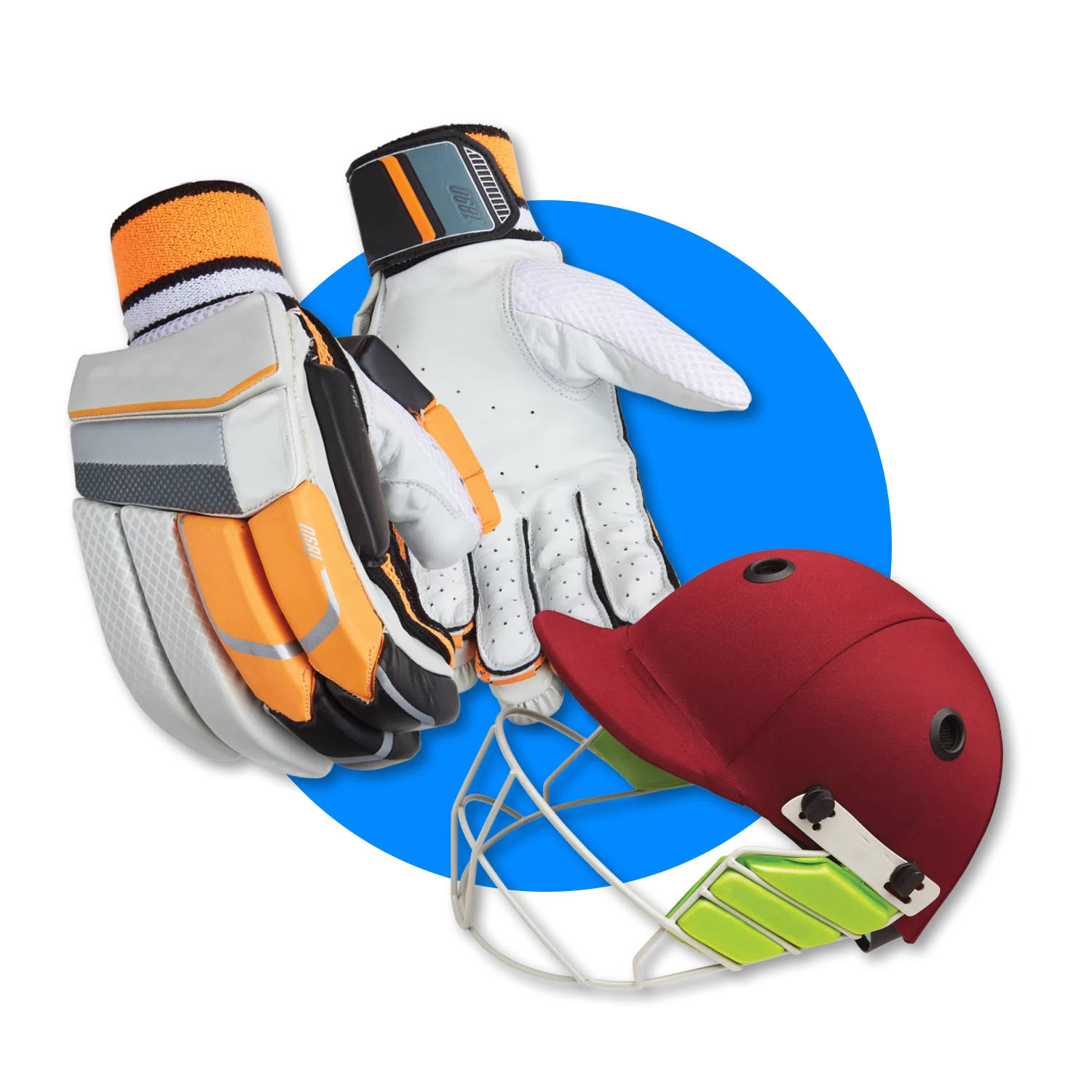Cricket Equipment and Gear
In cricket, a circular area known as the pitch hosts 11 players for each team. A cricket bat is used to pitch a ball to a batsman, just like in baseball. The wicket, a wooden support with three stumps and two bails, is located behind the batter.
In a typical game, one team pitches the ball and tries to topple the three stump-supported bails, while the other team hits and tries to prevent this from happening. By removing the bails (known as being bowled) or fielding the ball after it has been struck into the air, the pitching side attempts to dismiss the batting side. Teams exchange sides once 10 players have been ejected.
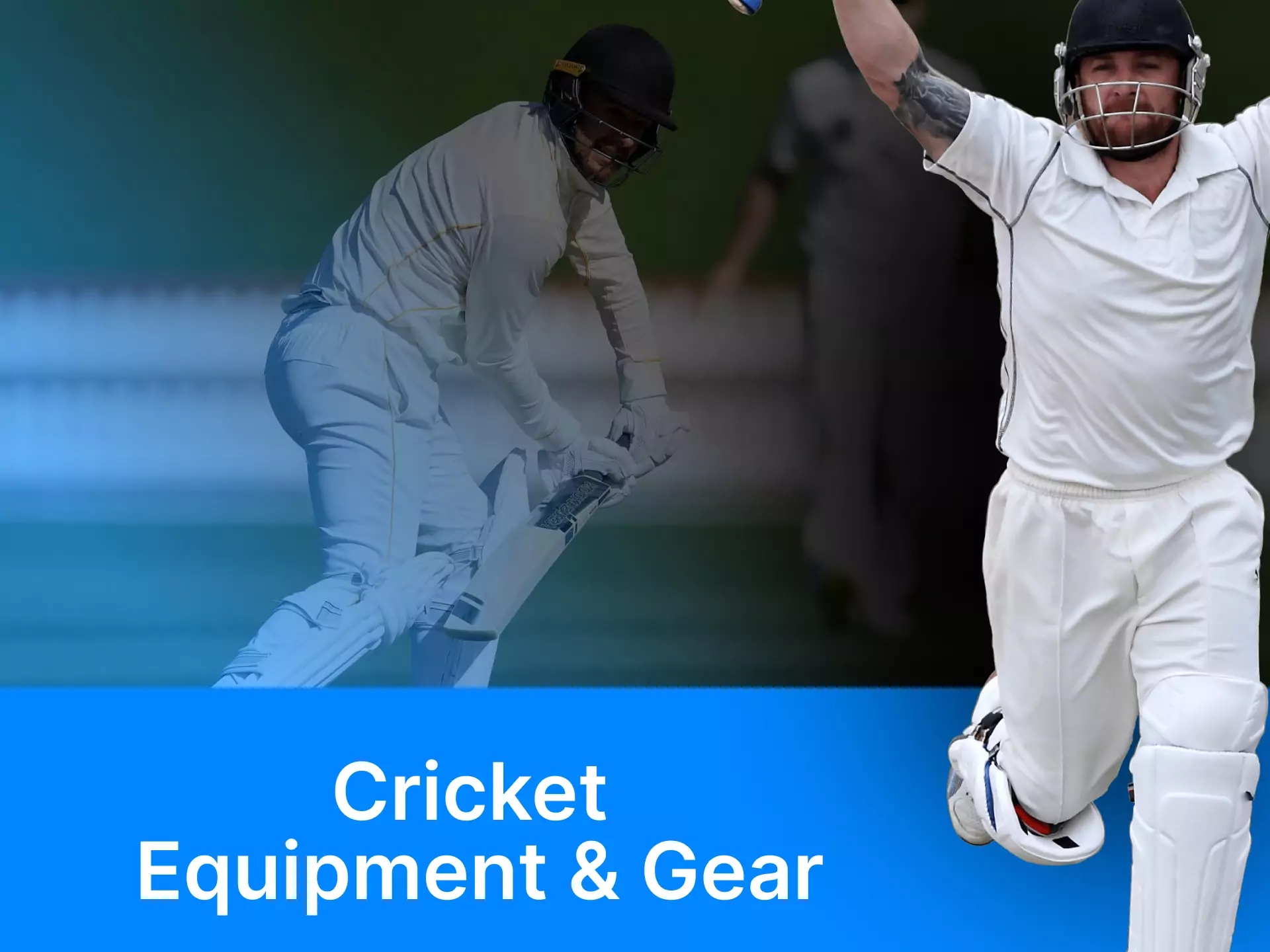
Matching Equipment
Every cricket player must have a certain set of tools, referred to as match equipment, in order to participate in the sport. Only the minimal requirements are included in this kit, which excludes non-essential items. The most well-liked cricket match accessories include:
- Cricket Bag;
- Cricket Bails;
- Cricket Ball;
- Cricket Bat;
- Cricket Stumps;
- Water Bottle.
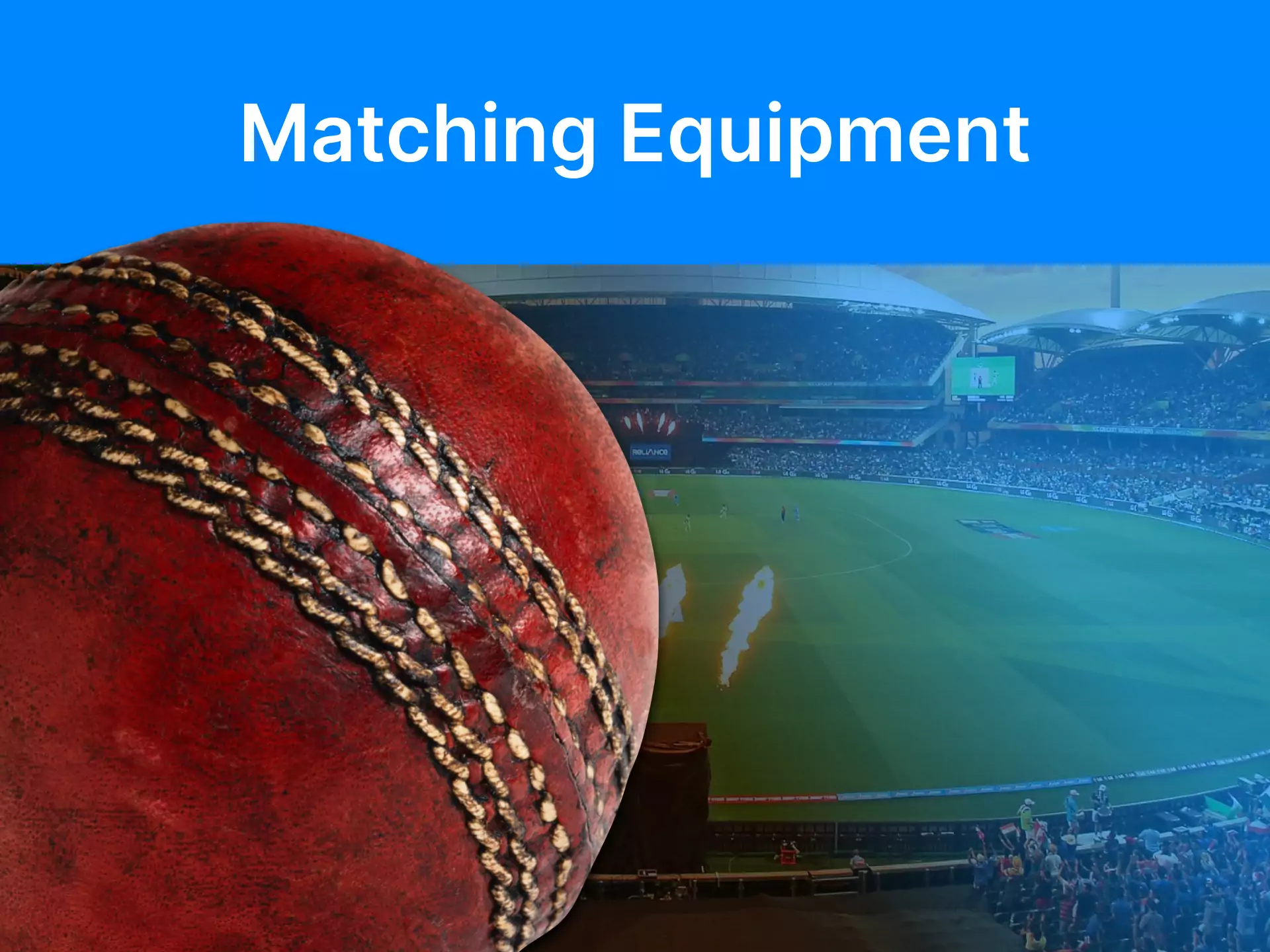
Cricket Bag
Cricket bags are necessary for transporting your gear to and from practices or games. The equipment you need, such as your bat, helmet, balls, gloves, and other safety gear, may all fit in bags made specifically for cricket players. Every cricket bag will include straps to make it simpler to carry, while some cricket bags could also have wheels. These bags each contain a distinct compartment, often with a main pocket in the centre and smaller side pockets on the sides. Depending on the size and functionality, cricket bags can cost as little as Rs. 2000 or as much as Rs. 20000.
Cricket Stump Bails
Round pieces of wood known as cricket bails are set on top of the wickets at the end of each pitch. The bowler’s goal while delivering the pitch is to strike these wickets and cause the bails to drop. One approach to get a batter out of their turn is in this manner. Since bails are crucial to gaming and are easily lost due to their size and form, it is advised to have more than the needed two bails on hand during every game. Bail sets in the standard size cost Rs. 300.
Cricket Ball
Cricket balls are typically red, firm, and thick. They have a cork core and leather outside. They have a punch on impact and weigh between 5.5 and 5.75 ounces. The result of their influence was the development of a wide range of protective gear for the game of cricket. An assortment of six balls costs around Rs. 4200, whereas a single ball can cost up to Rs. 700.
Cricket Bat
One of the most distinctive components of the game is the cricket bat. The actual bats are just composed of wood; they have a rounded, leather- or rubber-wrapped handle for grip, and a flat blade at the bottom. The overall length of the bat must be 38 inches or less, and the blade must be 4.25 inches broad. Depending on the sort of hitter you are and how much force you want for each hit, these bats may come in a variety of forms. Professional cricket bats can cost up to Rs. 50000, although entry-level models can be bought for about Rs. 700.
Cricket Stump
In cricket, stumps are used to construct the wickets that hold the bails. They arrive in sets of three rods that are intended to be buried in the ground using pointed stakes. Due to the nature of the outdoor game, stumps are usually made of wood and coated with a waterproof material. Although some can be constructed of metal and have bases built in, these are not intended for professional usage. They are essential to cricket since it is these wickets that bowlers aim for when they want to take out a batsman by removing the bails. They are always purchased in sets and range in price from Rs. 300 to Rs. 500 for each set.
Safety Equipment
Given that the cricket balls are comprised of cork and leather, the game of cricket may be risky. Naturally, safety gear has been created throughout the years by both cricket players and fans to protect themselves from harm. In cricket, the following types of protective gear are among the most popular:
- Arm Guard;
- Chest Guard;
- Cricket Helmet;
- Elbow Guard;
- Gloves;
- Jockstrap;
- Leg Pads;
- Mouthguard;
- Thigh Guard;
- Wicket Keeper Gloves.
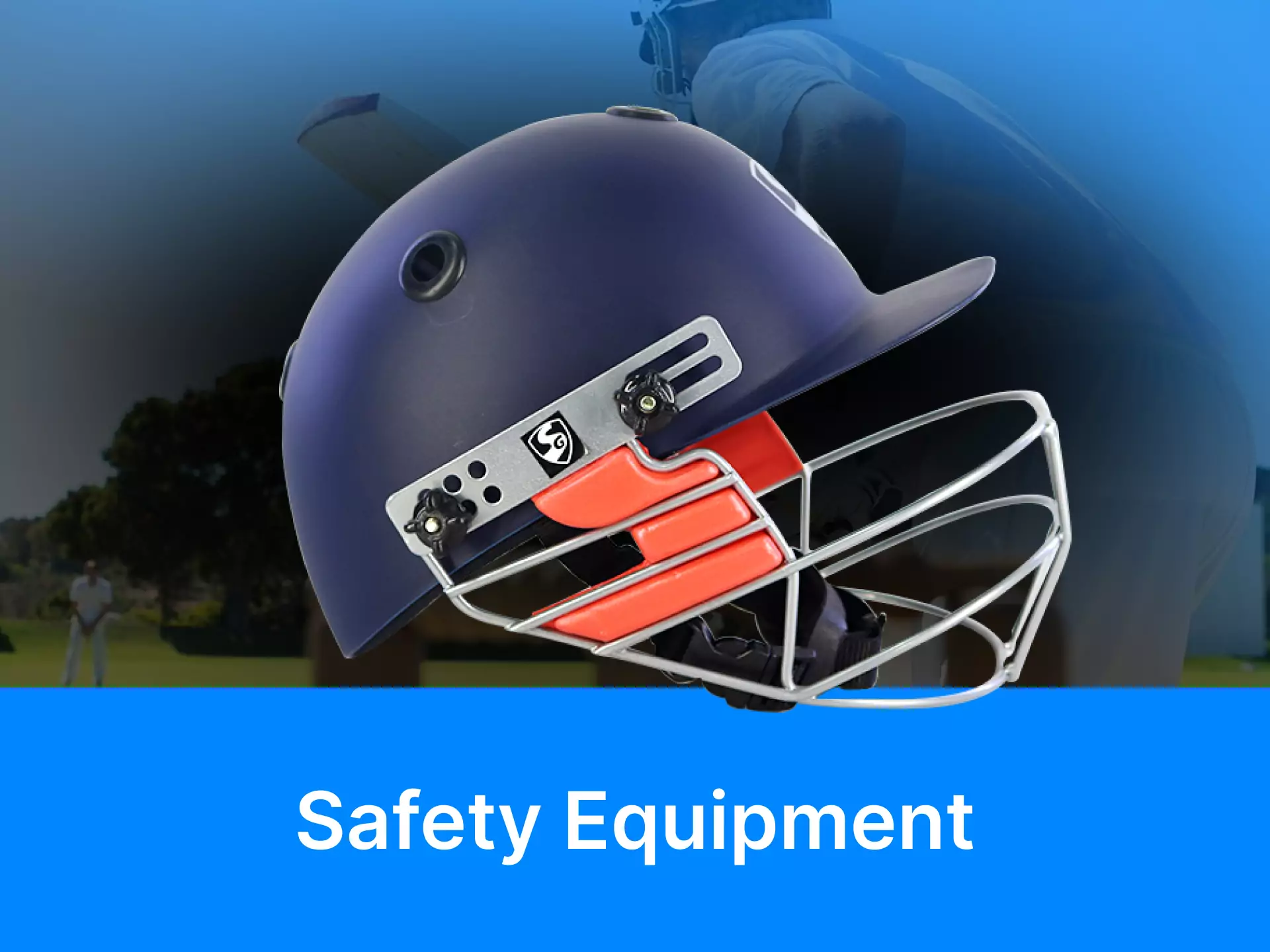
Arm Guard
In cricket, there are several different types of protective equipment, including arm guards. Although there is no contact in the game, the heavy ball frequently strikes fielders and hitters. These guards normally cover the player’s forearm and are put on like gloves. They are constructed of a spandex material with a foam or plastic portion to protect the arm’s outside. Arm guards can be purchased separately for between Rs. 200 and Rs. 300.
Chest Guard
Similar protection is provided by a chest protector, especially for hitters. A player’s shirt lies like a plate below a chest guard, which is fastened to the player’s back by straps. The plate can be constructed of plastic and wrapped in a material that is more pleasant for the wearer or it can be padded with shock-absorbing material that better conforms to the player’s chest shape. They are normally offered for roughly Rs. 350 and are made by the same companies that make cricket arm guards.
Cricket Helmet
A crucial component of the game of cricket is the helmet. These helmets are a need for safety since a batter’s skull might sustain catastrophic injury from a ball striking them in the head. A cricket player’s jaw is protected by a titanium cage that is linked to a flat-brimmed helmet with a painted covering that has a similar shape to a cap. These helmets frequently have styling that matches the team’s apparel. Professional cricket helmets may cost up to Rs. 3000 and have various ventilation panels and comfy internal materials, while novice cricket helmets cost between Rs. 500 and Rs. 750.
Elbow Guard
Arm guards and elbow guards have very similar functions. They are often composed of the same protective materials and are applied in the same way (by slipping them on like gloves). When playing cricket, the elbow is a particularly weak area of the arm, especially when batting, hence it is crucial that they be protected from any approaching balls. Depending on how flexible the guard is, they may be purchased for as little as Rs. 100 to as much as Rs. 750.
Gloves
In cricket, batsmen are the ones who typically wear gloves. They serve as a grip and a line of defence against approaching balls. Cricket gloves frequently include additional padding around the fingertips and foam divisions for flexibility. They are quite substantial on the backside to protect the wearer’s knuckles, wrists, and finger bones but feature a thin rubber coating on the palm for optimal grip on the bat handle. To avoid chafing, they are occasionally topped with cotton inner gloves. Some athletes like using the design of their batting gloves as a means of personal expression. Cricket gloves range in price from $15 to $40 depending on the brand and design.
Jockstrap
When playing cricket, a jockstrap and cup set is an essential piece of gear for safety. The most delicate regions of your body should be well protected because balls can be hurled at 80 mph. In the majority of contact and/or stick and ball sports, jockstraps are common. They cost around Rs. 100 and are easily accessible from a variety of vendors.
Leg Pads
Another form of crucial protective gear for cricket hitters is leg pads or guards. They contain substantial cushioning all the way down, from the knee all the way to the player’s ankles. If the knee or shin bones come into touch with the hard cricket ball, these pads are designed to protect them. To facilitate players’ complete range of motion, they are often rounded at the top. Cricket equipment vendors charge roughly $45 for a set of leg pads.
Thigh Guard
Another necessary piece of safety gear for any cricket player is thigh protectors. Two thigh shells are linked to this equipment, which is worn around the waist like a spandex band. The goal remains the same whether you wear them together or individually as sleeves around each thigh. The sensitive region above the knees is shielded by the shells. Although sets that are worn around the waist might cost more than $50, pairs only cost $20.
Wicket-Keeper Gloves
In cricket, wicketkeepers are more likely to be struck by the ball than other fielders. Behind the batters, they are in charge of caring after the wicket and the balls. To protect all game-playing fingers, they contain cushioning and a protective covering akin to the batter’s gloves. The price range for wicketkeeper gloves on the websites of authorized cricket equipment suppliers is $50 to $150. The degree of protection that the gloves will offer determines the quality of the gloves.
Clothing
Cricket athletes dress in specialized uniforms and attire when participating, similar to most other athletes. This outfit has roots in long-standing customs and is a distinguishing feature of what fans may expect when they attend a game. Cricket attire that is particularly well-liked includes:
- Cricket Cap;
- Cricket Shirt;
- Cricket Shoes;
- Cricket Pants.

Cricket Cap
In traditional cricket attire, practically every player dons a cap. They are hats with flat brims that are close to the head and are often made of felt or a polyester cotton mix. Cricket hats come in a wide range of colours and designs, and they frequently change to match a team’s or school’s uniform. Similar to baseball hats, athletes typically don them when fielding. Most sports merchants provide cricket caps online for less than Rs. 300.
Cricket Shirt
One component of a cricket player’s attire referred to as “cricket whites,” is a cricket shirt. These shirts are polo-style and normally have short sleeves unless it’s really chilly outside while the game is taking place. These shirts are white the majority of the time. The term “cricket whites” comes from how this keeps players cool in the heat and makes it easier for them to see the red ball. However, there are some situations in which athletes don’t always wear white uniforms. Depending on the design, fabric, and brand, these shirts can cost anywhere from Rs. 350 and Rs. 600.
Cricket Shoes
The choice of cricket shoes is crucial to a player’s performance. Depending on their preferred style of play, players in various field positions would select lightweight or heavyweight shoes. Because they have varying degrees of traction, the various types of spikes on the sole of cricket shoes are essential for a strong grip when running and even batting. The right footwear can help shield a player’s ankles from a variety of playing-related ailments. Cricket shoes are actually not that costly; you can find a good pair with vented material for about Rs. 2500.
Cricket Pants
Players in cricket are required to don the appropriate attire, which includes pants or trousers. Cricket players wear trousers, in contrast to other sports where the majority of athletes wear shorts. Cricket pants are distinctive in that they are made to be loose enough to allow for ventilation without restricting movement. By shielding the legs from scratches brought by sliding on the ground, they also offer extra protection. Cricket pants can make it more comfortable to use different leg guards or pads when batting. Typically, a team’s pants will be white or match the colours of the rest of their uniform. Cricket pants are available between Rs. 600 to Rs. 900.
Conclusion
Hence, these were the important equipment and gear which are primarily necessary to have for an individual to play the sport of cricket at a reputed level.

Latest Posts

Cricket Competition Formats: Full Guide 2023
Overview of cricket competition formats: Test Matches, ODI, T20. Learn more about cricket competition formats now.

Women's Cricket: History, Records and Legendary Players
A detailed history of women's cricket. Learn about the records and legendary players in women's cricket!

Cricket Rules: Full Guide [year]
A complete guide to the rules of cricket. Learn the rules of the game, key terms, and the rules of scorekeeping in cricket matches.
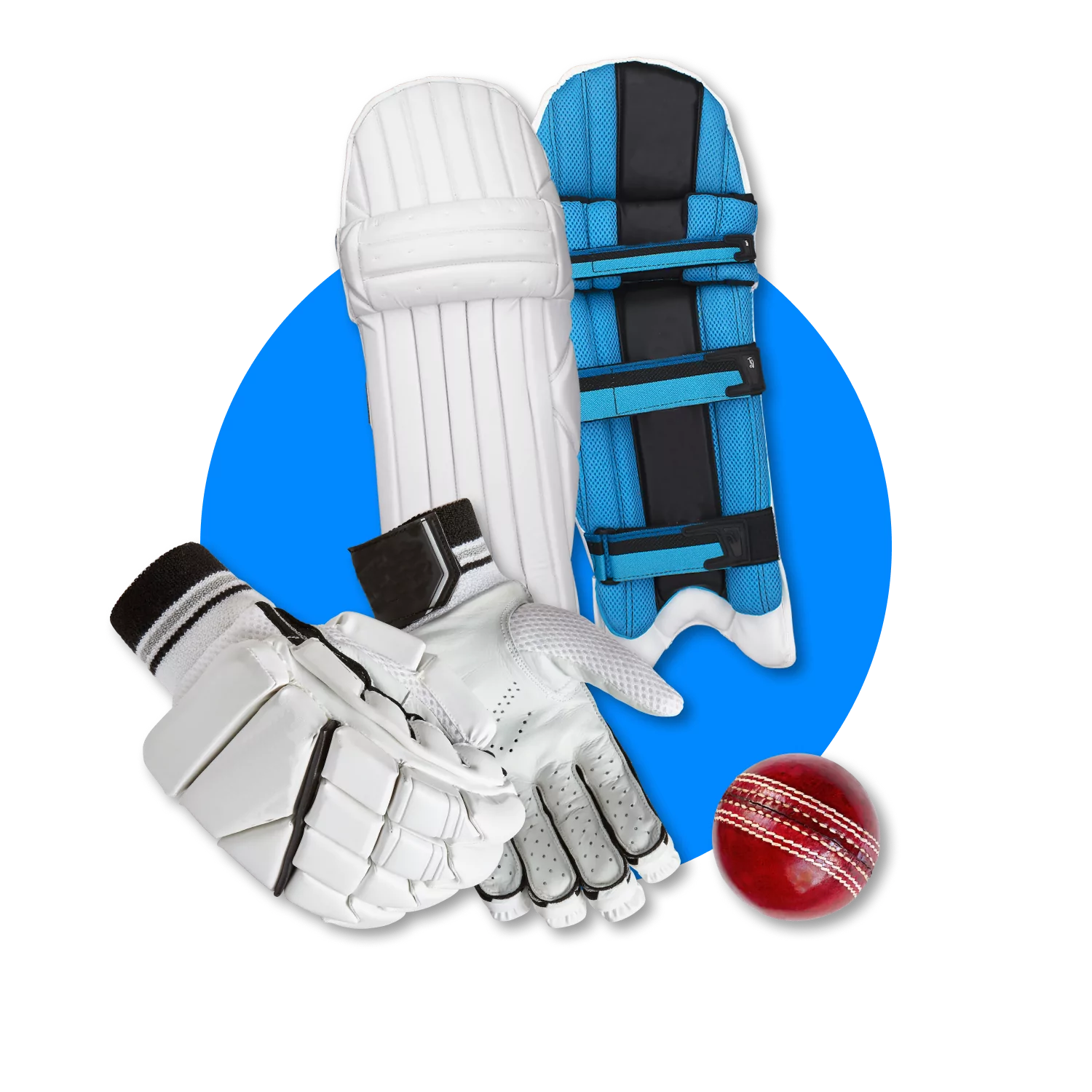
Cricket Bat: The History of Evolution of From 1700 to Present Day
A complete history of the evolution of the cricket bat. From the first models in 1700 to the present day.
Updated:
Post author

Jayesh Bhattar
Jayesh Bhattar founded Cricket Betting Guru in 2021 and heads the editorial team of the portal. Jayesh is highly qualified in the Indian sports betting market and is a professional analyst of cricket matches and player transfers. He is a member of the GPWA community and his high skill set in the online betting industry is a testament to that.
